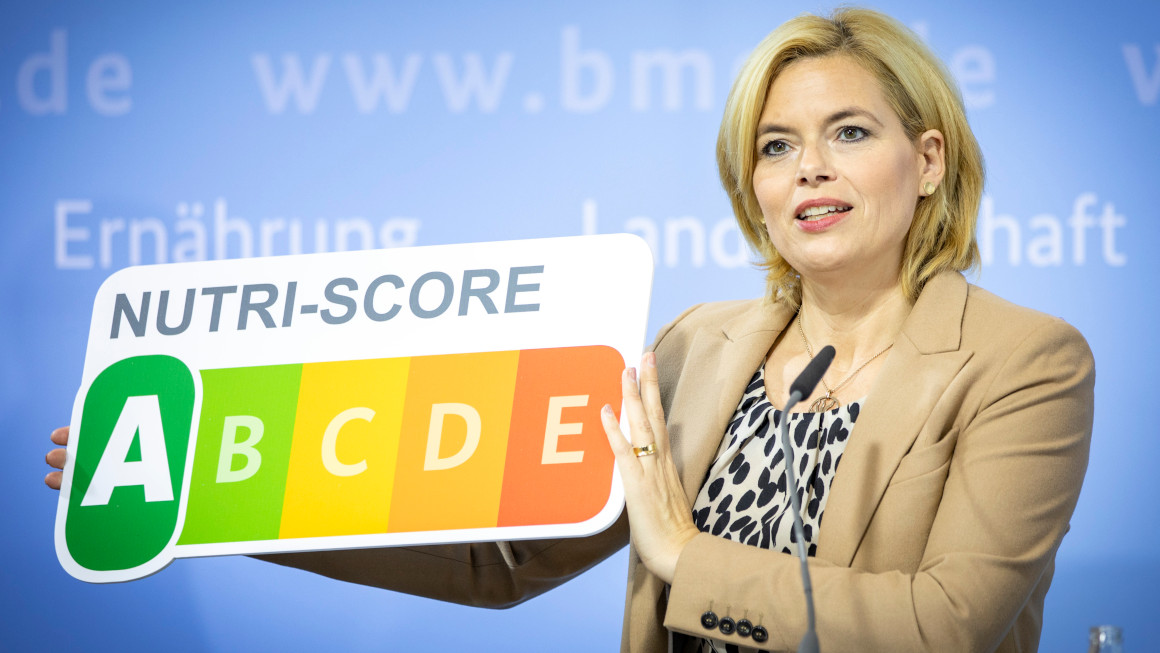In November, the "Nutri-Score" nutritional label comes
With a regulation by the Federal Minister of Food and Agriculture, Julia Klöckner, Germany introduces the Nutri-Score. The Nutri-Score is an extended nutritional label and is placed on the front of packs. When shopping, it helps to compare the nutritional quality of products within a product category (e.g. yoghurt A with yoghurt B) at a glance. True to the motto: Simply eat better!
Julia Klöckner: “With the Nutri-Score we create orientation at first glance. For a healthier diet and against hidden calorie bombs. It is now the companies' turn and they must label their range comprehensively. Because consumers expect clarity and truth.”
Companies can then use the Nutri-Score with legal certainty. The corresponding ordinance by the Federal Minister of Food and Agriculture, Julia Klöckner, will come into force when it is published in the Federal Law Gazette in November 2020.
The national introduction of extended nutritional information is not mandatory under current EU law. The Nutri-Score is not mandatory in France or Belgium either, nor is the keyhole system in Scandinavia. With the support of many other member states, Federal Minister Julia Klöckner is campaigning for the introduction of the uniform extended nutritional labeling in the EU as part of the German EU Council Presidency. The aim is to reach joint conclusions from the member states at the meeting of the EU Agricultural Council in December.
The Federal Ministry of Food is accompanying the introduction of the label with a comprehensive information campaign for consumers and companies. Under www.nutri-score.de information, expert opinions, answers to frequently asked questions, a calculation tool and publications are available.
Background: The Nutri-Score's five-level colour-letter combination ranges from a green A to a red E and indicates the nutritional value of a food. Within a product group, a food with a green A rating is more likely to contribute to a healthy diet than a product with a red E.
1. Which foods are labeled?
Almost all foods that have a nutritional value table on the packaging can be labeled with the Nutri-Score.
2. How is the Nutri-Score calculated?
With the Nutri-Score, a five-level colored scale from A to E shows the nutritional quality of a product. For this purpose, the energy content and the contents of nutritionally favorable and unfavorable nutrients are offset against each other and assigned to the scale. The colors green to red help with orientation: A dark green A contributes more to a healthy diet than a red E. The Nutri-Score refers to 100 grams or 100 milliliters of a food. For his calculation, he uses the information from the nutritional value table and the list of ingredients that companies have to provide anyway.
3. What exactly does the Nutri-Score say?
With the Nutri-Score, consumers can compare different products in a product group in terms of their nutritional value. This means: Within a product group, for example, a food with a dark green A is the nutritionally more favorable choice in terms of nutrient composition compared to a food with a yellow C.
4. Can I also compare a ready-made pizza with muesli?
No, the Nutri-Score can only be used to compare products from the same category, e.g. B. chocolate bar A with chocolate bar B (same products from different producers) or similar products in the same product category, e.g. B. Chocolate muesli with fruit muesli. Consumers can thus identify which product has a more favorable nutritional composition and thus select the cheaper alternative.
5. May I only eat category A products for a balanced diet?
No, the Nutri-Score says nothing about what a balanced diet should look like. Anyone who only eats category A muesli is far from eating a balanced diet. Because this includes many different foods, including luxury products. The decisive factor is the quantity in which the food is consumed. This means: Even foods with a Nutri-Score of D or E can be on the menu from time to time - without having to have a bad conscience.

